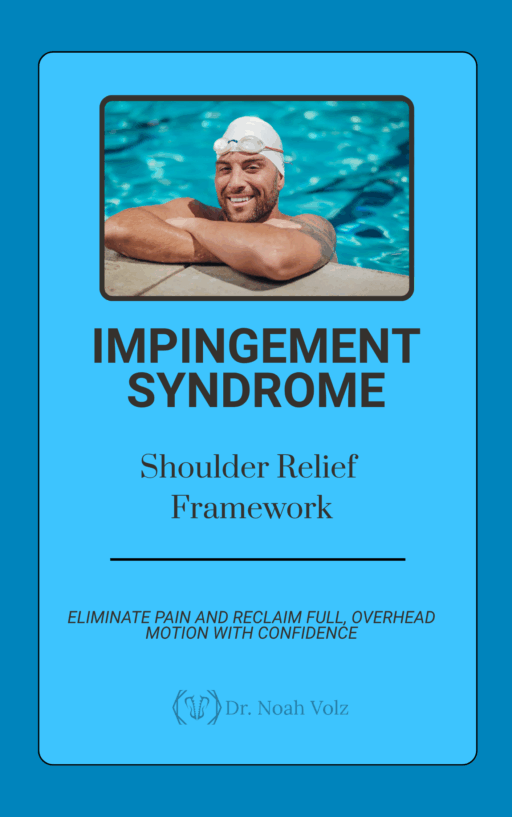Thoracic Spondylosis, a complex degenerative condition affecting the discs, vertebral bodies, and/or facet joints of the thoracic spine, requires a comprehensive treatment approach. A proven method for managing this condition is through chiropractic care.
Understanding Thoracic Spondylosis
Thoracic Spondylosis is a broad term which describes dynamic, interdependent degenerative changes that occur in the spinal region in response to stress and time123. Despite the commonality of these degenerative changes, particularly in the thoracic spine, the pain associated with them is relatively uncommon, accounting for only 2% of all spinal degeneration-related complaints45.
The Degenerative Cascade
The degenerative process in the spine, described as a “degenerative cascade” by Kirkaldy-Willis and Benard6, begins with repetitive micro-traumas that cause small circumferential annular tears. These initial “sprains” may or may not be painful, depending on the degree of innervation of the annular lamellae6.
As the degeneration progresses, the disc thins from cumulative stressors and by the loss of its normal viscoelastic properties over time7. This results in the body laying down additional bone in the form of osteophytes on the anterior and lateral vertebral body margins7.
Symptoms of Thoracic Spondylosis
Symptoms related to thoracic degeneration usually manifest insidiously, without a history of significant trauma8. The continuum of symptoms begins with axial complaints and sometimes advances to “radicular” as the degree of neurologic involvement increases8.
Clinical Findings and Diagnostic Tools
Clinical findings may include painful or limited thoracic range of motion9. Radiographic findings associated with spondylosis include loss of disc height, joint space narrowing, osteophytosis, subchondral sclerosis, vacuum phenomenon, and cyst formation10.
MRI is warranted when conservative care fails to improve symptoms after three to six weeks and in any case of progressive neurologic deficit10.
The Role of Chiropractic Care in Managing Thoracic Spondylosis
Chiropractic care is a proven method for managing thoracic spondylosis. It aims to relieve inflammation, reduce compressive forces, and restore normal mechanics11.
A primary risk factor for the development & progression of degeneration is joint dysfunction12, and chiropractic manipulation can restore joint function13.
Efficacy of Spinal Manipulative Therapy (SMT)
While studies evaluating the value of SMT for thoracic spondylosis are sparse, spinal manipulation has proven beneficial in the treatment of chronic back pain1415 and other thoracic spine complaints161718.
Contraindications to Spinal Manipulation
Though spinal manipulation can be hugely beneficial, there are instances where it may be contraindicated19. Severe degeneration is a contraindication to high velocity, low amplitude (HVLA) manipulation19.
Other Treatment Options
In addition to manipulation, other treatment options may include myofascial release, stretching, self-mobilization on a foam roller, ball, or other apparatus2021, and exercises to correct for the presence of upper crossed syndrome, lower crossed syndrome or paradoxical breathing22.
Medical Co-Management
Medical co-management may include prescription of Cox-2 inhibitors or muscle relaxants, facet blocks, thoracic epidural steroid injections, and in severe or recalcitrant cases, surgical intervention.
Conclusion
Thoracic Spondylosis is a complex degenerative condition that requires a comprehensive treatment approach. Chiropractic care, as practiced by professionals such as Dr. Noah Volz in Ashland, OR, offers a proven method for managing this condition and relieving the associated pain.
Footnotes
- Schneck CD. The anatomy of lumbar spondylosis. Clin Orthop Relat Res. 1985;193:20–36.
- Gibson JNA, Waddell G. Surgery for degenerative lumbar spondylosis. Spine. 2005;20:2312–20
- Middleton K, and Fish DE. Lumbar spondylosis: clinical presentation and treatment approaches Curr Rev Musculoskelet Med. 2009 June; 2(2): 94–104.
- Wood, K. B., et al. “Magnetic Resonance Imaging of the thoracic Spine.” Journal of Bone and Joint Surgery 77-A 11 (1995): 1631-1638.
- Juergen Kraemer, 2009, Intervertebral Disk Diseases: Causes, Diagnosis, Treatment and Prophylaxis , Thieme , Stuttgart, 375p.
- Kirkaldy-Willis WH, Wedge JH, Yong-Hing K, et al. Pathology and pathogenesis of lumbar spondylosis and stenosis. Spine. 1978;3:319–28.
- Nathan H. Osteophytes of the vertebral column: an anatomical study of their development according to age, race, and sex with consideration as to their etiology and significance. J Bone Joint Surg 1962; 44: 243–268.
- Malanga GA Thoracic Discogenic Pain Syndrome Clinical Presentation Medscape, Accessed: http://emedicine.medscape.com/article/96284-clinical
- O’Neill TW, McCloskey EV, Kanis JA, et al. The distribution, determinants, and clinical correlates of vertebral osteophytosis: a population based survey. J Rheumatol. 1999;26:842–8.
- Jensen MC, Brant-Zawadzki MN, Obuchowski N, et al. Magnetic resonance imaging of the lumbar spine in people without back pain. N Engl J Med. 1994;331(2):69–73.
- Crothers A, Walker B, French SD Spinal manipulative therapy versus Graston Technique in the treatment of non-specific thoracic spine pain: Design of a randomised controlled trial Chiropractic & Osteopathy 2008, 16:12
- Roos EM, Herzog W, Block JA, et al. Muscle weakness, afferent sensory dysfunction and exercise in knee osteoarthritis. Nat Rev Rheumatol. 2011;7:57–63.
- Pickar JG. Neurophysiological effects of spinal manipulation. Spine J. 2002;2:357–71.
- Tulder MW, Koes B, Malmivaara Outcome of non-invasive treatment modalities on back pain: an evidence-based review. Eur Spine J. 2006;15(1):S64–81.
- Bromfort G, Haas M, Evans RL, et al. Efficacy of spinal manipulation and mobilization for low back pain and neck pain: a systematic review and best evidence synthesis. Spine. 2004;4(3):335–56.
- Linda Schiller, Effectiveness of Spinal Manipulative Therapy in the Treatment of Mechanical Thoracic Spine Pain: A Pilot Randomized Clinical Trial J Manipulative Physiol Ther 2001;24:394-401
- Giles LGF, Muller R. Chronic Spinal Pain: A Randomized Clinical Trial Comparing Medication, Acupuncture, and Spinal Manipulation. Spine 2003 (Jul 15); 28 (14): 1490–1502
- Triano JJ, Hondras MA, McGregor M. Differences in treatment history with manipulation for acute, subacute, chronic and recurrent spine pain. J Manipulative Physiol Ther. 1992;15:24–30
- Bertelsman TJ, Indications and Contraindications to Spinal Manipulation: A review of the Literature. Presentation, American Back Society Meetings, San Francisco, CA December, 1995
- Johnson KD, Grindstaff TL. Thoracic Region Self-Mobilization: A Clinical Suggestion. Int J Sports Phys Ther. 2012 April; 7(2): 252–256.
-

Bicep Tendon Pain Solution
$50.00 -

Brain Detoxification & Recovery System
$50.00 -

Brain Energy and Endurance Support System
$50.00 -

Brain-Based Movement and Motor Control Training
$50.00 -

Centralized Low Back Pain
$50.00 -

Cervical Radiculopathy: Neck and Nerve Relief Pathway
$50.00 -

Complex Low Back Pain
$50.00 -

Complex Radiating Low Back Pain
$50.00 -

Cross-Pattern Low Back Pain
$50.00 -

Frozen Shoulder Mobility Reset Plan
$50.00 -

Impingement Syndrome: Shoulder Relief Framework
$50.00 -

Mastering Brain Senses: Rebuild Your Hearing, Vision, and Body Awareness
$50.00













